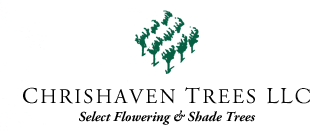Do you provide delivery?
Yes, on a limited basis, minimums apply. Inquire for our delivery area and rates. Most customers make their own transportation arrangements, either with their own fleet or with commercial carriers. We do work with several reliable carriers and would be happy to source freight quotes and arrange pickup and delivery on your behalf. We also cooperate with other growers to arrange pool shipments for customers.
Do you contract grow trees?
Yes. Each contract is priced individually based on the quantity, the growing time period and the species of tree. Contact us to discuss specifics.
Do you offer quantity discounts?
Yes. Price discounts are based on sales volume per order, and/or prior year’s sales. All discounts are subject to payment within agreed terms. See Terms of Sale for details.
What are your hours of operation?
Business hours are from 8:00 a.m. to 4:00 p.m., Monday – Friday. Often times we are available before or after business hours or on weekends for freight pick-up or tours of the nursery. Please contact us for special arrangements. We are closed for all National Holidays and mid-winter, from the week of Christmas until the second week in January.
Are your trees machine dug or hand dug?
We utilize two Holmac digging machines which enable us to machine dig root balls from 16” up to 55”.
Are your tree balls in wire baskets?
All larger root balls and species which do not readily establish dense root systems are tied with wire baskets. Also, wire baskets may be employed on entire orders upon customer request.
Can you ship to Canada?
Yes. We have several years of experience shipping to Canada. Since import/export regulations are subject to frequent change and different import brokers have specific requirements, it is best to address each Canadian shipment on an individual basis. Please contact us for details.
What is the weight of your various B&B trees? How many trees will fit on my truck?
Regretfully, we do not have truck scales at the nursery. Root ball weights of any given size will vary depending on soil type, soil moisture content, and time of year.
Approximate ball weight calculations and trailer load capacities
| Caliper | Ball Width | Ball Height | Weight | Average Number per 45 ft. Trailer |
| 1.75” | 22” | 15” | 175 lbs. | 120 |
| 2.0” | 24” | 16” | 200 lbs. | 110 |
| 2.5” | 28” | 19” | 350 lbs. | 90 |
| 3.0” | 32” | 20” | 480 lbs. | 50 |
| 3.5” | 38” | 23” | 700 lbs. | 35-40 |
| 4.0” | 42” | 25” | 1000 lbs. | 20-25 |
| 4.5”-5.0” | 50” | 30” | 1700 lbs. | 15-20 |
Do you have trees available for summer shipment?
We offer a limited supply of pre-dug B&B trees for summer shipment. Additionally, we have a good selection of plants in grow bags or pots, sizes 1.0”-2.25” caliper that are available for shipment year-round.
Do you summer dig?
Yes, we have had good success with summer digging on a number of species. Please note, however, that various plants respond differently to summer digging and it is not recommended for all species. Between the months of June and September, when days are long, the weather is warm, and trees are fully leafed, we must incur additional costs to ensure plant survival. Our summer digging protocol may include special watering, soil nutrient amendments, spraying foliage with an anti-desiccant product, and several days of post harvest misting to gently harden off the plants before shipment. Our summer dig surcharge is between 10-15% depending on species and size of order. All plant material dug out of the normal dormant season is dug at the customer’s own risk. The following chart may be of interest:
Chrishaven Trees
Summer Digging Guide
| SUCCESSFUL | MARGINAL | UNSUCCESSFUL |
| Cercidiphyllum | Acer griseum | Chionanthus |
| Cornus kousa | Cornus florida | Cladrastus |
| Parrotia | Cornus mas | Davidia |
| Stewartia pseudocamellia | Nyssa | Magnolia |
| Oxydendrum | Stewartia monadelpha | |
| Ginkgo | Styrax |
Your catalog indicates hardiness zones. What does this mean?
The U.S. Department of Agriculture originally developed a system of Plant Hardiness Zones to reflect expected minimum winter temperatures for areas of North America. This system has since been extended globally. Each zone covers 10 degrees Fahrenheit. We have attempted to indicate the low to high zone recommendation on the plants we grow, based on the best literature. Many factors besides temperature may affect cold hardiness, such as plant hardening days (40 degrees F.) prior to first frost; soil moisture content; wind chill factor; sun scald; etc. Plants may survive beyond their recommended zones but, in such cases, may fail to thrive. This may be evident by various forms of winter damage, lack of flower or fruit production, or a shortened life span.
